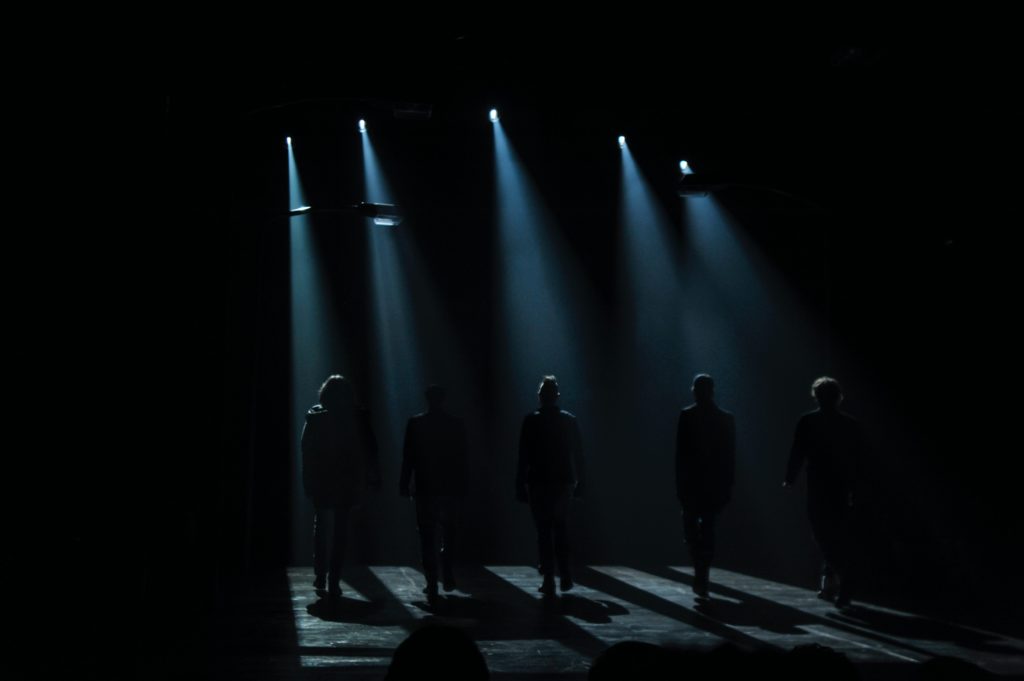Yeah, we got one, too.
The Semiotics of Theater
Write in scene. It’s something us craftspeople always hector writers with. We go so far as to say: if it’s not in scene, you can’t keep it.
In Finish Your Book In Three Drafts I say there are five definitions of scene. The first: “A scene is where something happens.” The second: “A scene is where because something happens, something changes.” (Read about the other three here.)
But maybe giving a few definitions, or admonishing people to “show, don’t tell,” isn’t enough. So, I went back into my graduate studies to ask myself, what does it mean to write in scene? What even is a scene?
I returned to theater and film to explore how a scene can be constructed. They call it semiotics, the various sign systems through which a story can be expressed. I made a list of 16 of them, grouped into 11 categories, from multiple sources. Here goes:
- Gesture. We pick up a lot of meaning from the way people use their hands, the relative state of openness of the torso, and so forth. This also covers Facial Expressions.
- Tone. We often assign adverbs to describe how someone said something. Less often do we think about the character as an actor, about the word choice and word order that will best let them hit the tone of voice they have to.
- Dialogue. In plays and movies, they rarely waste a word. And they don’t use dialogue to describe things people already know. They let people interrupt each other, lie, talk about two different things at once… all the things you will hear at your local coffee shop today.
- Lighting. I don’t know how this applies to creative writing, actually. Ditto Background Music, But it’s on the list…so maybe you can tell me?
- Costume. Yes, what people wear! On purpose, by negligence. This also extends to Make-up, Hair Style, and even Accessories.
- Action. People stomp about, kiss, throw things — and maybe break them, leave, get on their knees and beg forgiveness — and that’s just in the course of one argument.
- Prop.This one I think we are all familiar with. See this PDF for thoughts about how a repeating object becomes a symbol.
- Scenery. I don’t have a lot of patience for word-painting, or writers who try to reach their word count by lavishly describing everything their eyes can see. But it is still important to clue people into the context of an action. Are we inside or outside? What time of day is it? And beyond that, reaching people through the senses — what it smells like, what Sound Effects people can hear intermittently — brings them into the scene in a way that few other maneuvers can.
- Number of Actors. A whole sign system is based on whether there is only one person present, an intimate few, or we have the makings of a crowd. And this is relevant not only to what can happen in the scene, but also to how it feels to the viewer (reader), what they can expect to happen, and how they understand what the scene means.
- Awareness of the Audience. Another conceptual sign system worthy of contemplation. Are we, as the audience, at an impossible remove from the action? Do the characters have some sense we there, as if we might be extras? This might be communicated with an intimacy of tone. Or do they address us directly, as in an aside that breaks the fourth wall?
- Diction. This will be the focus of a future blog, the level of verbal expression, including word choice and dialect. Let’s just say here that how fastidious a character is, and where they got their ideas (that is still reflected in the traces of how they express them), is a whole thing in and of itself.
It’s a lot to keep in mind. And really, I only produce this list so that, when you are stuck in one particular scene, you might glance at it, and say: Lighting! That is how I will show the crux of the situation as it modulates into a new reality that all the characters present must now cope with.
And hey, if you do pull that off, let me know how you did it?


Leave a Reply